Types of mirror tiles
Interior tiles for finishing work with a reflective surface are usually made either from glass or durable plastic, such as polystyrene. There are a great many manufacturing options:
- flat and smooth surface, such tiles provide almost invisible joints;
- beveled tiles, easy to install;
- tiles with an effect imitating metal, for example, gold, silver, chrome or polished bronze;
- tinted, having a faint shade;
- ornamented tiles (have a pattern obtained by sandblasting);
- decorative, decorated with patterns or having three-dimensional images or a textured surface.
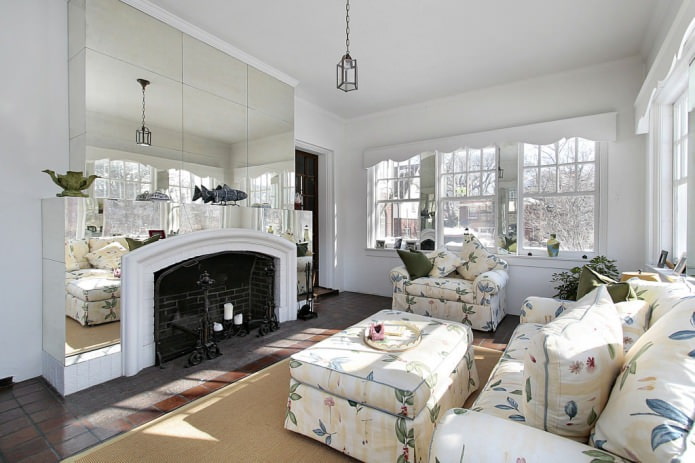
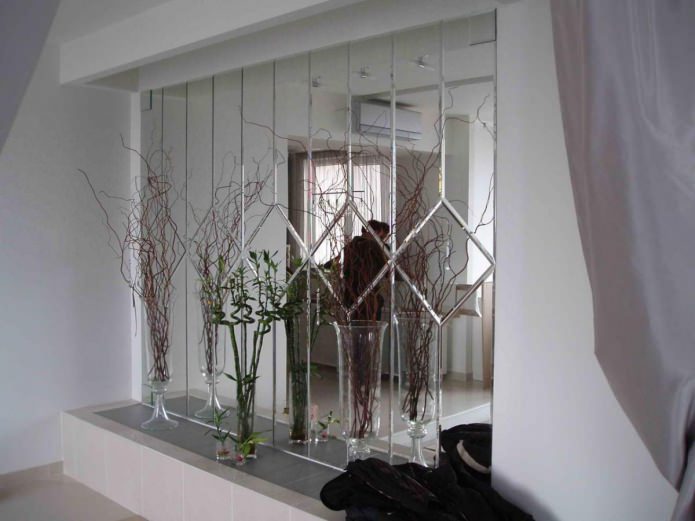
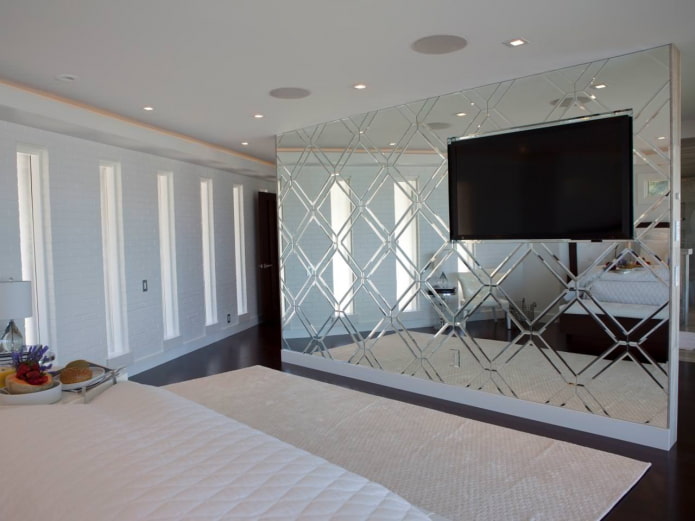
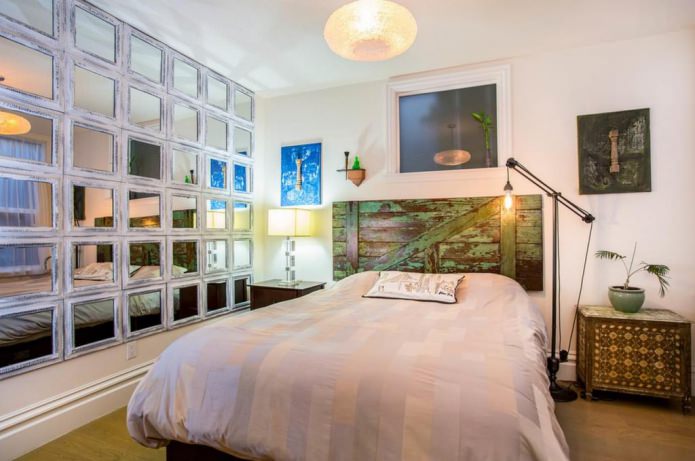
Interior design features
The main thing when using a mirror surface is to maintain a sense of proportion. Too many reflective elements can negatively affect the nervous system. In addition, mirrors located opposite each other create the feeling of a tunnel going into infinity, which has a depressing effect on the psyche.
You can use tiles on two surfaces that are connected to each other, for example – one of the walls and the ceiling. However, even in this case, it is better for the tiles to be different: for example, on the wall they can be patterned, and on the ceiling – smooth, but with a shade.
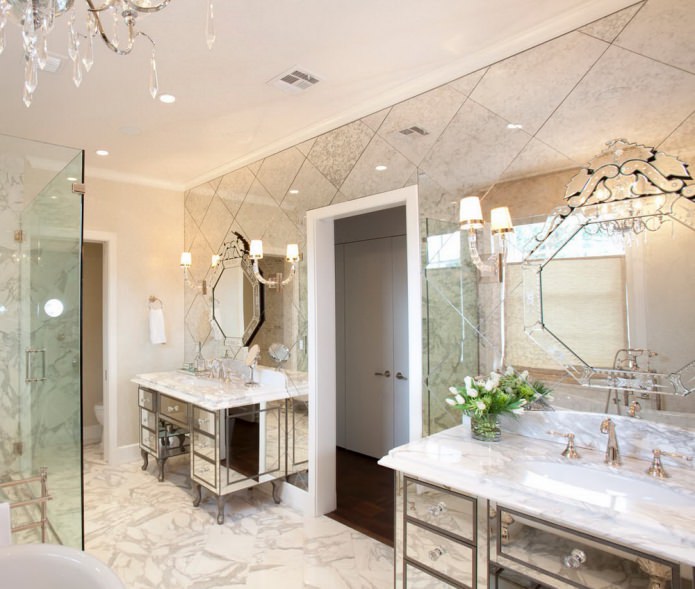
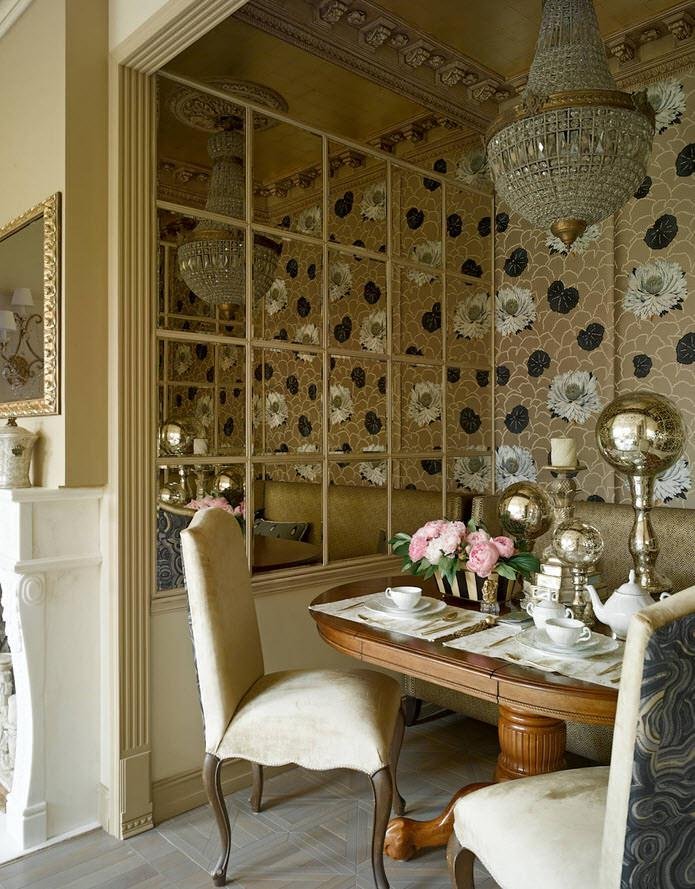
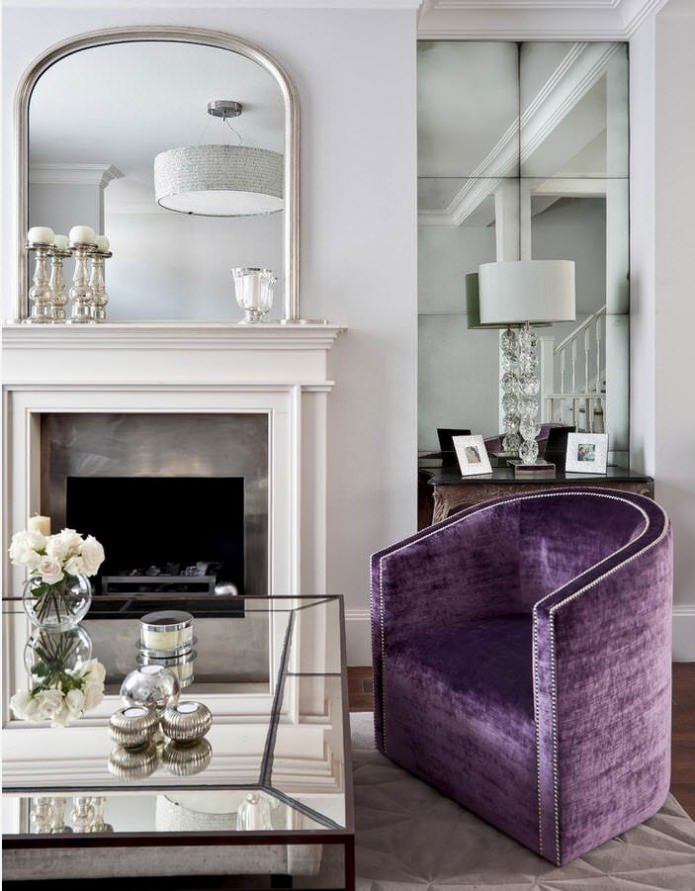
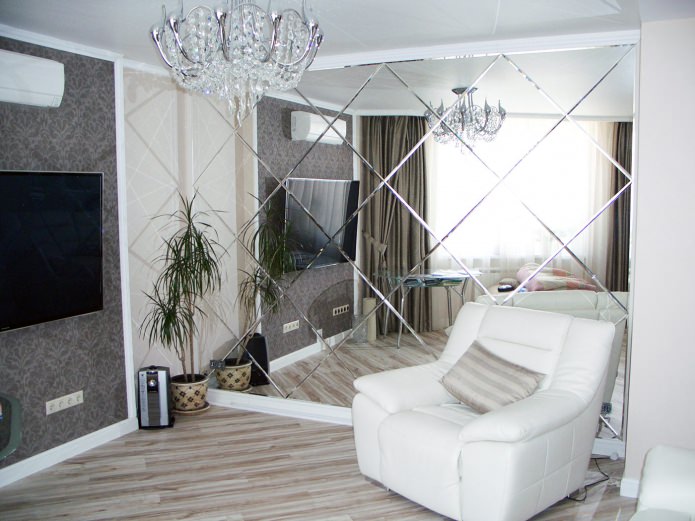
Advice: In the interior, designers recommend combining areas finished with mirror elements in such a way that they differ in the degree of reflection and are at different levels relative to the observer. At the same time, do not forget that light sources, reflected in mirrors, can negatively affect vision and tire. A good solution is to use matte lamps or LEDs next to mirror elements.
A ceiling laid with mirror tiles is visually raised, increasing the height of the room. However, at the same time, this creates the effect of an “inverted” room, especially if the entire area of the ceiling is lined with mirrors. Therefore, the mirror surface usually occupies only part of it. An important point is also what will be reflected in the ceiling – therefore, increased requirements are imposed on the interior of the room as a whole and on the floor covering in particular.
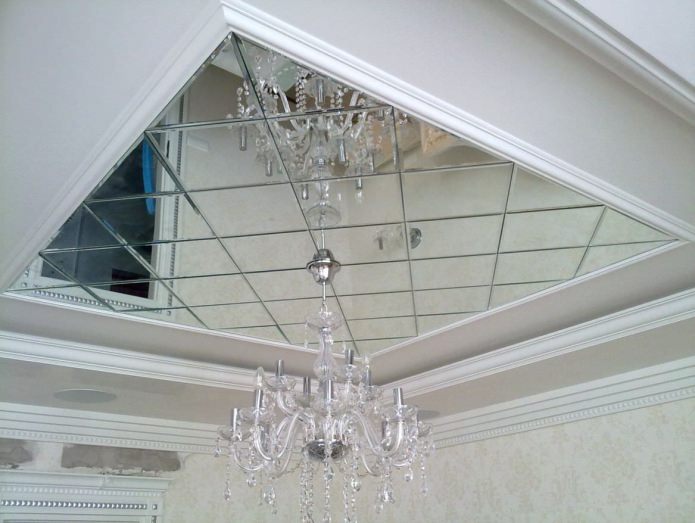
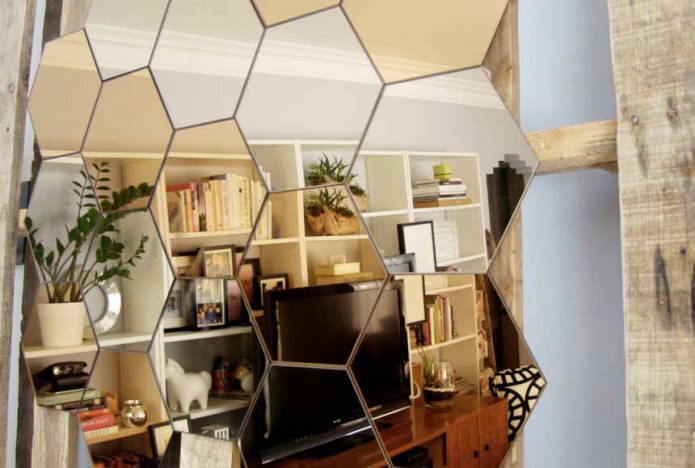
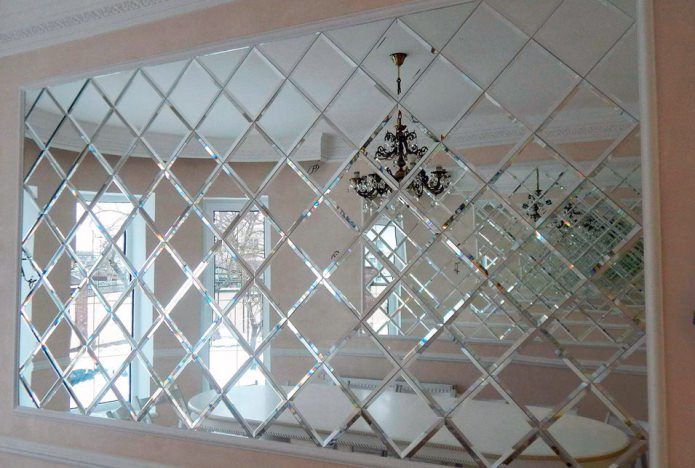
Visually “raising” the ceiling with mirror tiles makes sense in small rooms; the interior of a large room with high ceilings will look too cold and empty with such finishing.
Mirror floors are used less often in interiors. It is very important that what is reflected in them does not spoil the interior. In addition, if there is a mirror floor in the apartment, it is not recommended to use other reflective materials. Do not confuse a mirror floor with “mirror” parquet. The latter is just ordinary parquet covered with reflective varnish.
Mirror tiles in the interior go well with ordinary tiles, and the joints between them can be covered with plaster or wood moldings.
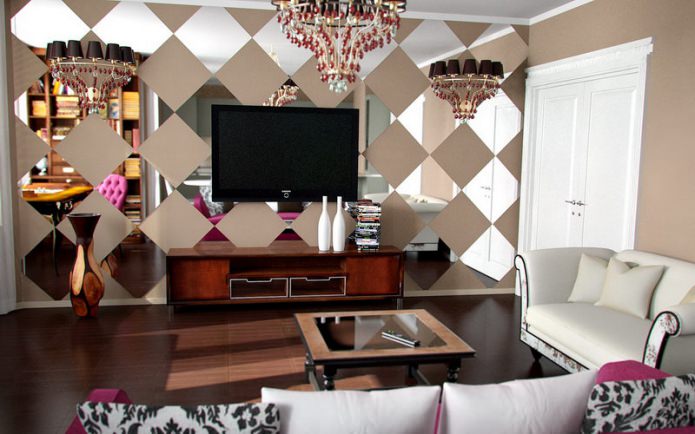
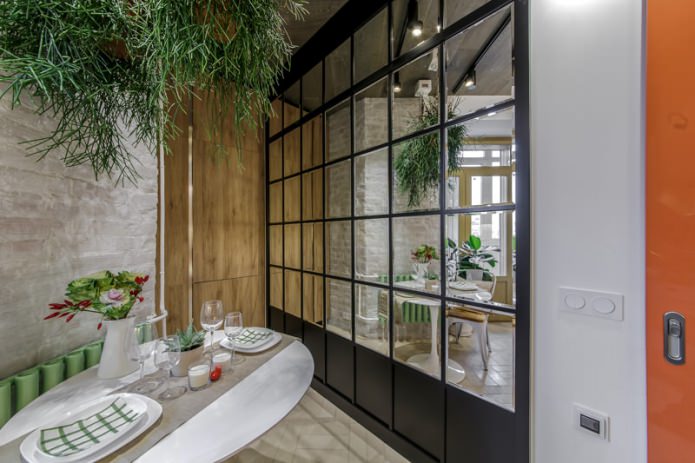
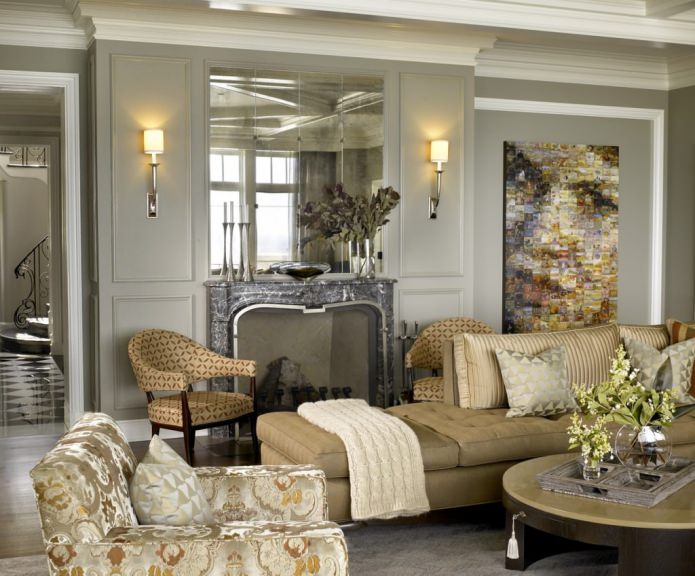
Hallway design
The placement of mirrors in the entrance area is a convenience requirement. Moreover, it is better if a person is reflected in it completely. Therefore, in the interior of the hallway, the use of mirror tiles on one of the walls will be quite appropriate.
Eastern traditions, in particular, the teachings of Feng Shui, prohibit placing mirrors opposite the entrance, it is believed that in this way money flows cannot enter the house. It is better to decorate the side walls with tiles – it will replace the traditional mirror. If the hallway is long and narrow, you should not tile the far wall with mirror tiles – the room will seem even longer and narrower, which does not add coziness.
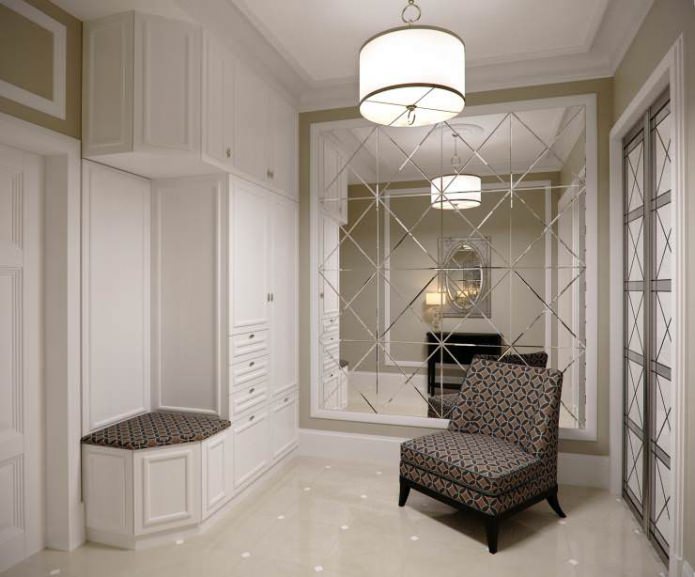
Photo in the living room
If the living room is zoned with a multi-level ceiling, it will be appropriate to decorate some of its parts with mirror tiles. Another idea for interior design is to completely tile one of the walls. This will expand the room and emphasize its details.
You can also use the property of mirrors to double the objects located nearby. Place several indoor plants near the wall decorated with mirror materials – it will seem that there are many more of them. A glass display case with beautiful dishes placed near a mirror wall will also “double” in size.
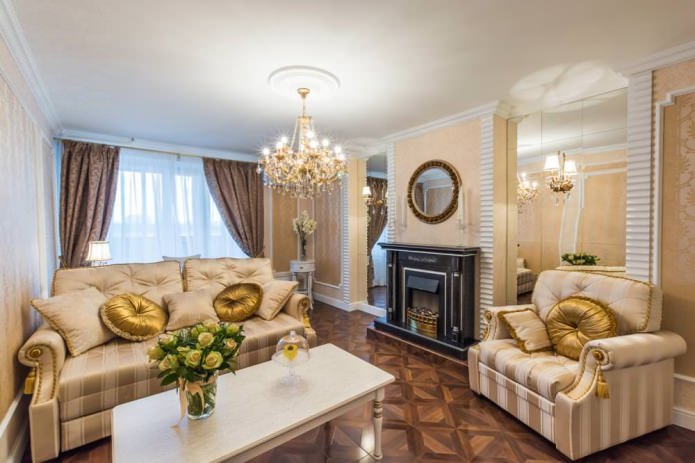
The photo shows a living room interior in a classic style, mirror surfaces help to visually enlarge a small space.
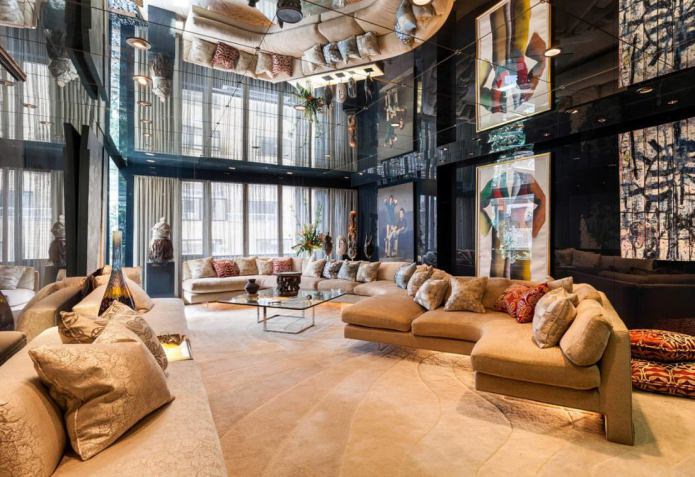
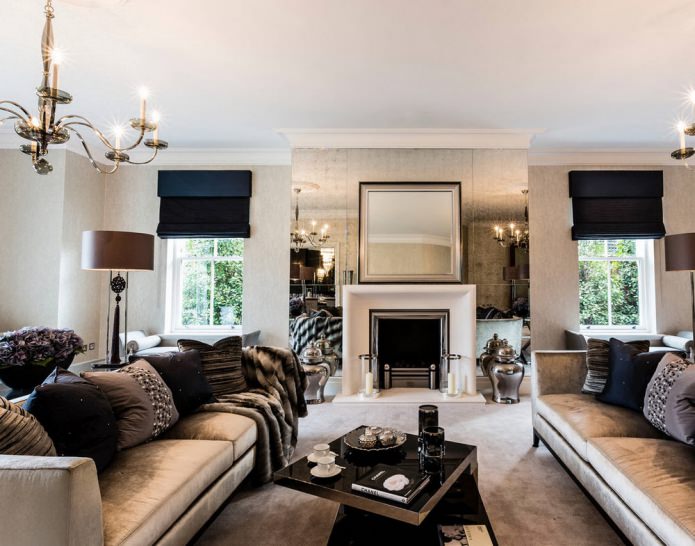
Kitchen design
Panels made of mirror tiles or mosaics are appropriate both in the kitchen interior and in the dining area. Cons: in rooms where food is prepared, all surfaces quickly become covered with a greasy film, especially if there is no hood, and this film is especially noticeable.
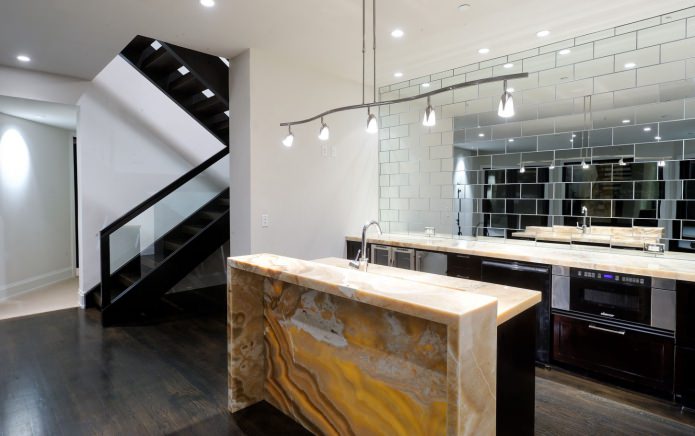
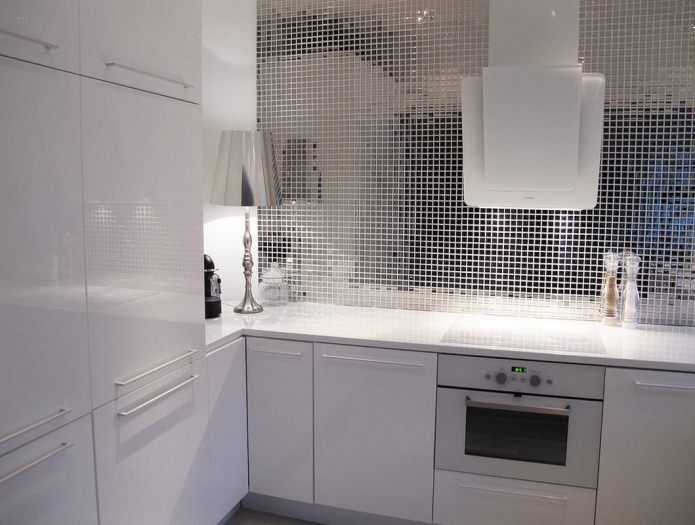
Bedroom ideas
In the bedroom interior, it is recommended not to use mirror tiles opposite the bed and on the ceiling. Decorate one of the front walls or the wall behind the headboard if you want to get a modern and aesthetic interior. However, some people may feel uncomfortable with large reflective pieces in their bedroom, so first try placing a large mirror against the wall and see how comfortable it is for you.
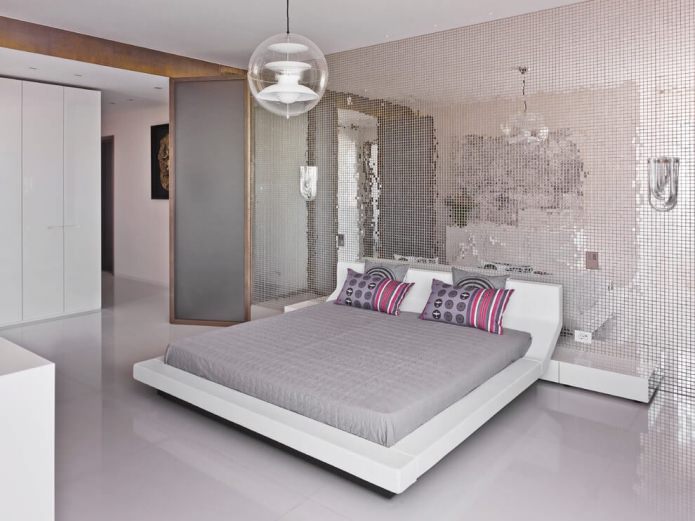
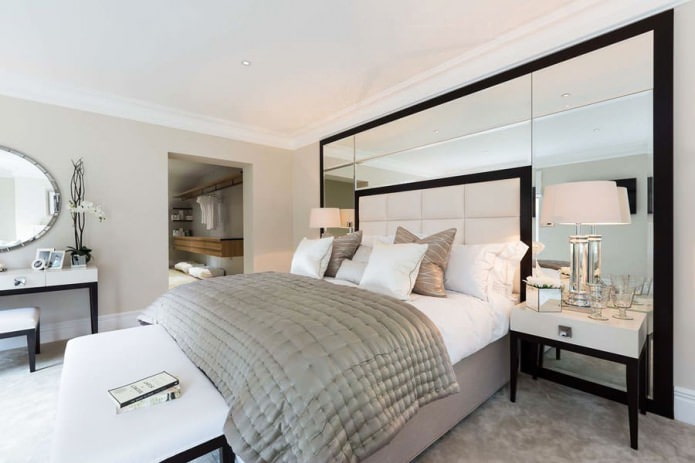
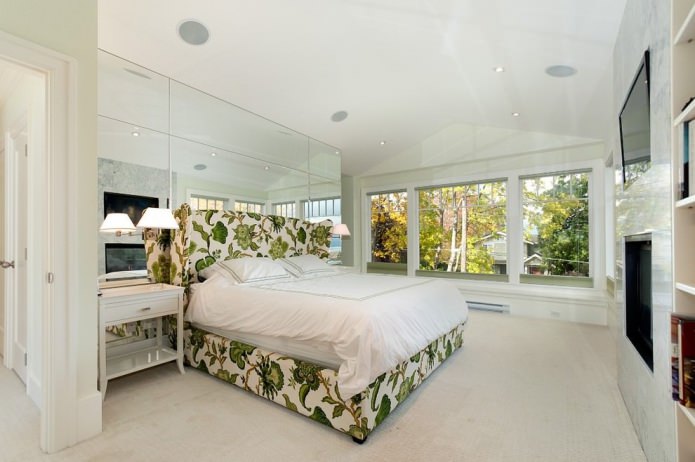
Children’s room
Mirror tiles are inappropriate in the interior of a child’s room – they break quite easily, which can lead to injuries. Instead, you can use self-adhesive film on the ceiling – it will reflect the weak light of the night light and create soft diffused lighting for those children who do not like to sleep in a dark room.
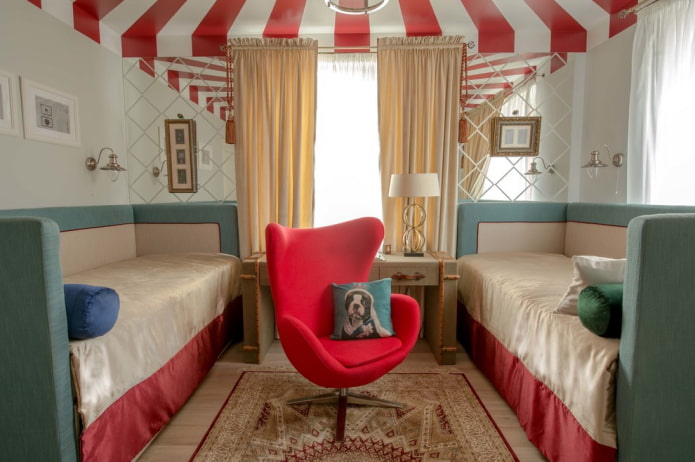
Bathroom
Mirror elements can look very impressive in the interior of bathrooms and toilets. These are the rooms in which almost the entire surface of the walls can be lined with it. The only inconvenience is that the tiles fog up when using hot water.
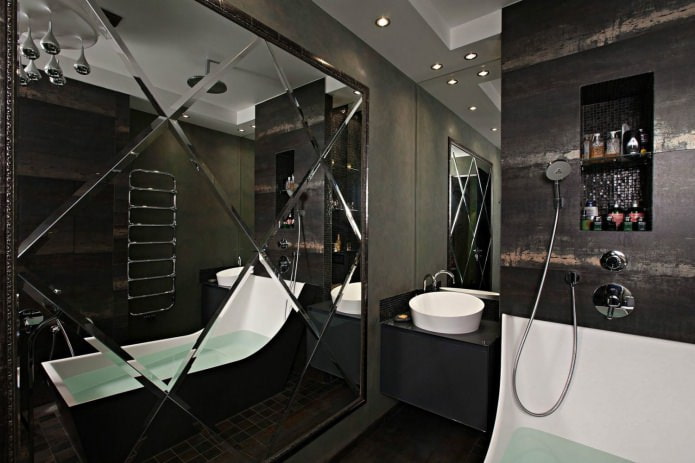
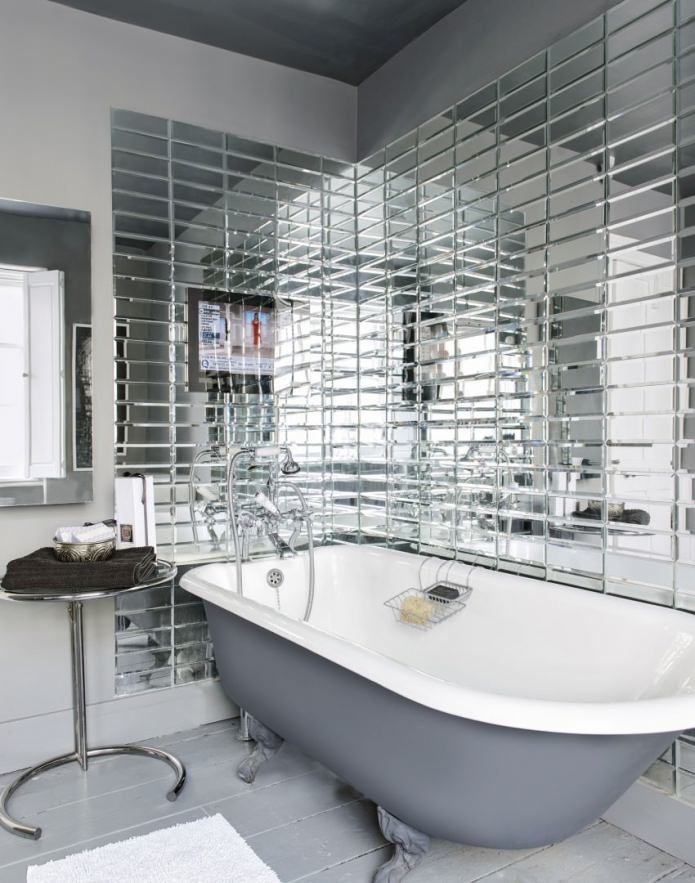
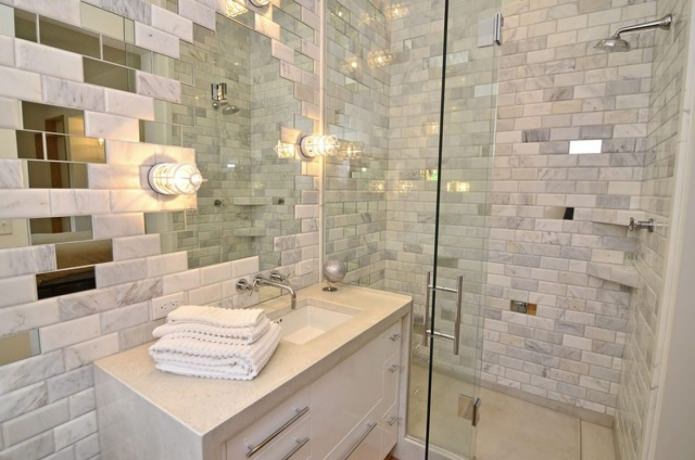
Walkthrough areas
A corridor, a passage from one room to another or a staircase in a house are not the most illuminated places, so a mirror surface, especially with proper lighting, will be very appropriate. An original option is to decorate the risers with tiles. In this case, the steps seem to float in the air, and the staircase itself is very light.
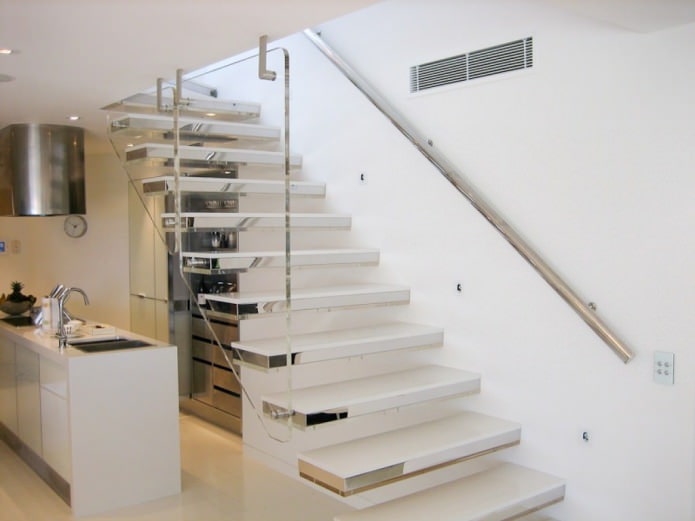
Now reading:
- effective ways to increase the area of your home if it has become cramped.
- Discover the Versatile Hyundai ix20: Your Perfect Ride
- Your Comprehensive Guide to Buying Honda Used Cars
- Colors of construction helmets and their meaning: what are they?
- Living room walls: 60+ photos and modern design solutions